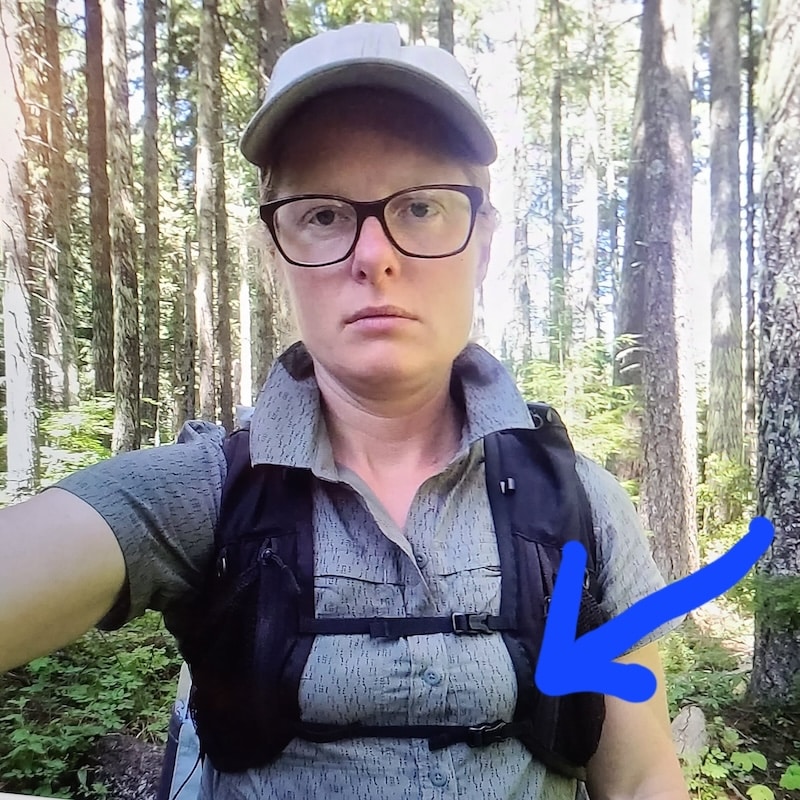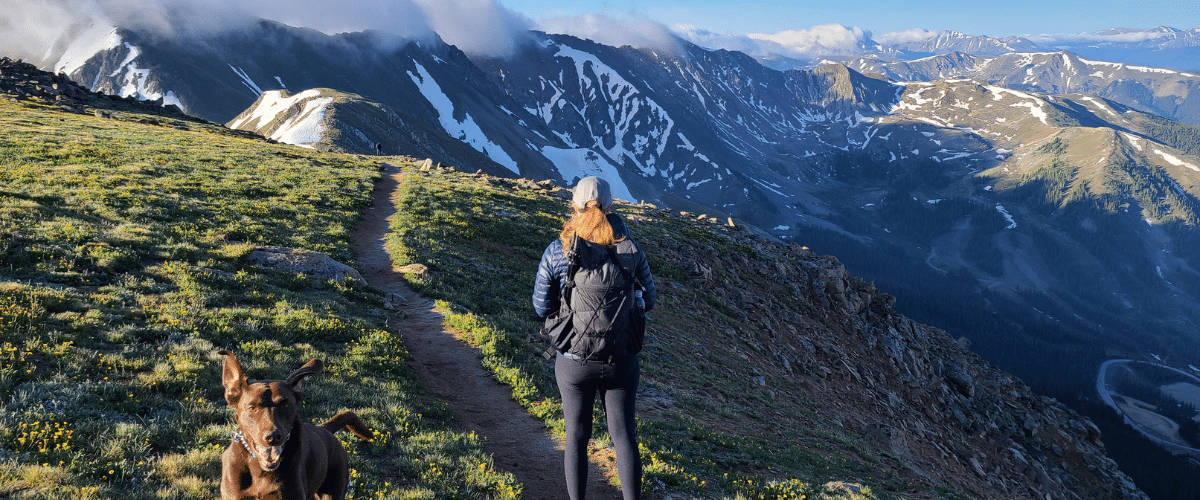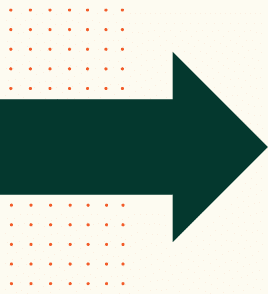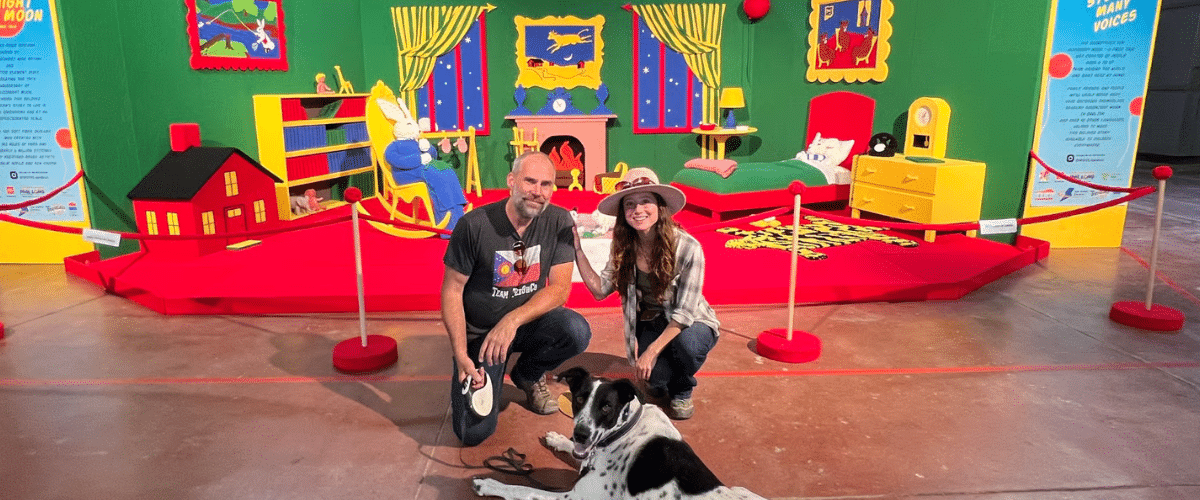By Margaret Hedderman
Hiking a long distance trail is meant to be one of those life altering experiences; a sort of trial by fire that transforms you inside and out.
“One of my big takeaways from the Pacific Crest Trail was trusting myself to figure it out when I get there. Because you can have a great plan, but you never really know what’s going to happen,” Sarah Berkeley said.
If you think about it, thru-hiking sounds a lot like entrepreneurship. For Sarah, that burgeoning self-trust and confidence didn’t just carry her from Mexico to Canada. It helped her launch an ultralight gear company built specifically for women: Symbiosis Gear.
Now in her third year of business, Sarah is growing her client base and building on her brand’s momentum. In April, she won the Startup Colorado Pitch Competition in Sterling, which enabled her to launch a crowdfunded business loan campaign through Kiva.
Identifying the problem: boob squish
For the uninitiated, long-distance hiking on trails like the Pacific Crest Trail has surged in popularity over the past few decades. Since 2013, the total number of permits issued by the Pacific Crest Trail Association increased from 1,879 to nearly 8,000 in 2022. That growth has led to the development of endless products that help hikers reduce the weight on their back as they trudge hundreds of miles.
But, as Sarah discovered, gender inequality impacts the world of outdoor gear as well. During her PCT hike, she went through three different backpacks—some marketed as unisex or men’s, others labeled for women. But none were truly designed to fit the realities of femme bodies. Not one pack fit her properly.
“The first one had really wide, straight shoulder straps, so they went out over my rotator cuff, and I couldn’t move my arms very well,” Sarah said.
With restricted arm movement, she decided to ditch her trekking poles—an essential piece of gear for thru-hikers which help with balance and stability. Abandoning them turned out to be a bad idea.

“I found myself hanging by my fingertips on the side of a mountain because I had slipped. Had I had a backpack that fit and could still carry my trekking poles? I might not have been in that situation.”
The second pack was technically “women-specific,” but the torso was too long. It sagged, dragged, and restricted her hip movement. The third featured a running-vest-style front that looked promising… until it compressed her chest in an uncomfortable—and awkward—fashion. Meanwhile, she watched male hikers cruise by with sleek ultralight setups.
As she hiked, Sarah began to daydream about possible solutions to her problem. She asked, how have women carried loads throughout history? What could modern backpacking gear learn from baby wraps and other traditional methods of transporting weight over long distances?
“After the PCT, I waited two years before I started the company,” Sarah said. “Honestly, I was hoping somebody else would do it. I just wanted a good backpack”
The first thing she did was attempt to identify the potential market. Did other women experience the same problem as her?
A simple survey shared among friends and family, which quickly spread by word of mouth, brought in over 200 responses in a week.
“94% said it’s about damn time for a women’s specific backpacking gear company,” she said. “That told me it wasn’t just me. There were other people suffering, and wanting this problem to be solved as well.”
The Women’s Fit Problem No One Was Solving
“I was really frustrated with these gear companies for not solving this problem,” Sarah said. “And then when I started designing, I was like, Oh, this is complicated. Like, the number of variables is infinite.”
Designing a men’s backpack is relatively straightforward. According to Sarah, it mostly comes down to torso length—“as they get taller, their shoulders get wider, for the most part.” That same design logic usually extends to women’s packs, as well. But femme body shapes vary far more, making torso length alone an insufficient basis for design.
Shoulder width, shoulder slope, breast size and placement, waist size, hips, and height—there are so many different factors that can affect the fit of a backpack for women.

“My solution was to add a lot of adjustability.”
Sarah holds two degrees in art, grew up sewing, and once helped build a log house in Estes Park. Creativity and hands-on problem-solving were second nature.
“I was familiar with coming up with an idea, doing some drawings, and making a prototype. This iterative process was familiar,” she said.
The gear design process, however, was new to her. She studied the construction, took apart packs from other brands, and learned everything she could about materials. Working with consultants, she refined her design and sent it to a specialized backpack factory in Vietnam, where many major outdoor brands also manufacture. The first prototype came back strong, and after five rounds of tweaks, she had a final version: The Aspen, a frameless, ultralight pack for women.
What sets Sarah’s pack apart is the level of personalization. Almost every feature is adjustable—from the sternum strap, which can be placed nearly anywhere along the shoulder straps to a waist belt that fits everything from the smallest frame to a triple XL.
The Trail to Entrepreneurship
Sarah’s push to finally start her company came after applying to the Moosejaw Outdoor Accelerator in 2022. She didn’t get in, but the process kicked everything into motion.
“That got me to register the business, do the survey, the market research, and start putting things together,” she said.
Sarah leaned on her experience running a web design business and dove into courses through women’s business development centers, the SBDC, and any resource she could find. She teamed up with a friend in Colorado to consult on early designs and quickly realized that the state’s outdoor industry and startup culture offered a stronger foundation than where she had been living in Vermont. She relocated not long after.
Starting a product-based business came with significant upfront costs—consultants, prototypes, and manufacturing. To fund her first production run, Sarah launched a Kickstarter campaign and turned to friends and family for support. With little budget for marketing, she relied on grassroots strategies: social media, word of mouth, and thru-hiking events. She got her packs into the hands of long-distance hikers, secured reviews on gear blogs, and gradually built partnerships with a growing number of retailers.
Through it all, she’s learned to trust her own expertise: “When I hired these consultants, I was like, ‘Oh, I’m new to industry. I don’t really know about these things.’ And, it turns out they’re not ultralight backpackers. I actually do know a lot more than I thought I did.”

Going the Distance
Since winning the Startup Colorado Pitch Competition in Sterling, Symbiosis Gear prepared for an interest-free loan crowdfunding campaign from Kiva. Her goal was to raise $15,000 to support future prototypes—including an ultralight backpack with a frame and a daypack—as well as build brand recognition.
“So once I have those products, it’s really going to take the business to another level in terms of revenue,” she said. “Maybe I’ll be able to hire somebody. Maybe I’ll be able to pay myself.”
Kiva campaigns unfold in two phases: first, entrepreneurs rally support from 40 friends and family members through a private fundraising period. Once that milestone is reached, the campaign goes public, opening the door to backers around the world. In an incredible show of momentum, Sarah Berkeley hit her $15,000 goal the same day her Symbiosis Gear campaign went public. Backed by Startup Colorado, global supporters—and a major boost from Etsy, which matched her loans 4-to-1—Sarah’s campaign was fully funded in record time.
The Outdoor Industry Association recently reported that more women than men now participate in outdoor recreation. In fact, more than half of American women have been
“And if you go into any gear store, 62.9% of the gear is not for women,” Sarah said.
She wants to change that.
“That’s my goal, is to be in every outdoor retail store and have a wide range of gear for all kinds of outdoor activities, for women, girls, femme bodied people—eventually expanding beyond backpacking and into other sports as well.”
Join us in empowering rural entrepreneurs and ecosystem builders to achieve even more in 2025. Contributions of any amount directly power our mission to build a sustainable statewide network of resources supporting rural entrepreneurs, so that people and places can thrive and chart their own futures! Will you help us?





